'Ring of fire' solar eclipse 2021: See amazing photos from stargazers
The first solar eclipse of the year occurred Thursday (June 10) as the moon will passed in front of the sun and create the illusion of a "ring of fire" in the sky in northern Canada, Greenland and the Arctic. Other parts of the Northern Hemisphere saw a sunrise partial eclipse. See stunning photos of the June 10 "ring of fire" solar eclipse from stargazers around the world.
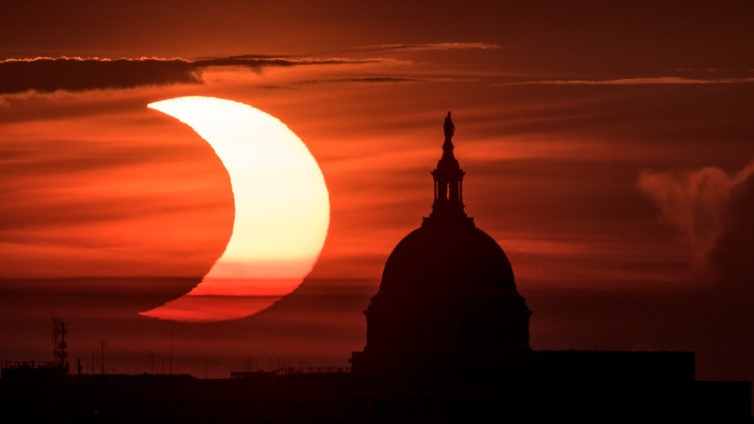
NASA photographer Bill Ingalls captured this amazing view of a crescent sun rising behind the U.S. Capitol Building in Washington, D.C., where only a partial solar eclipse was visible on June 10.
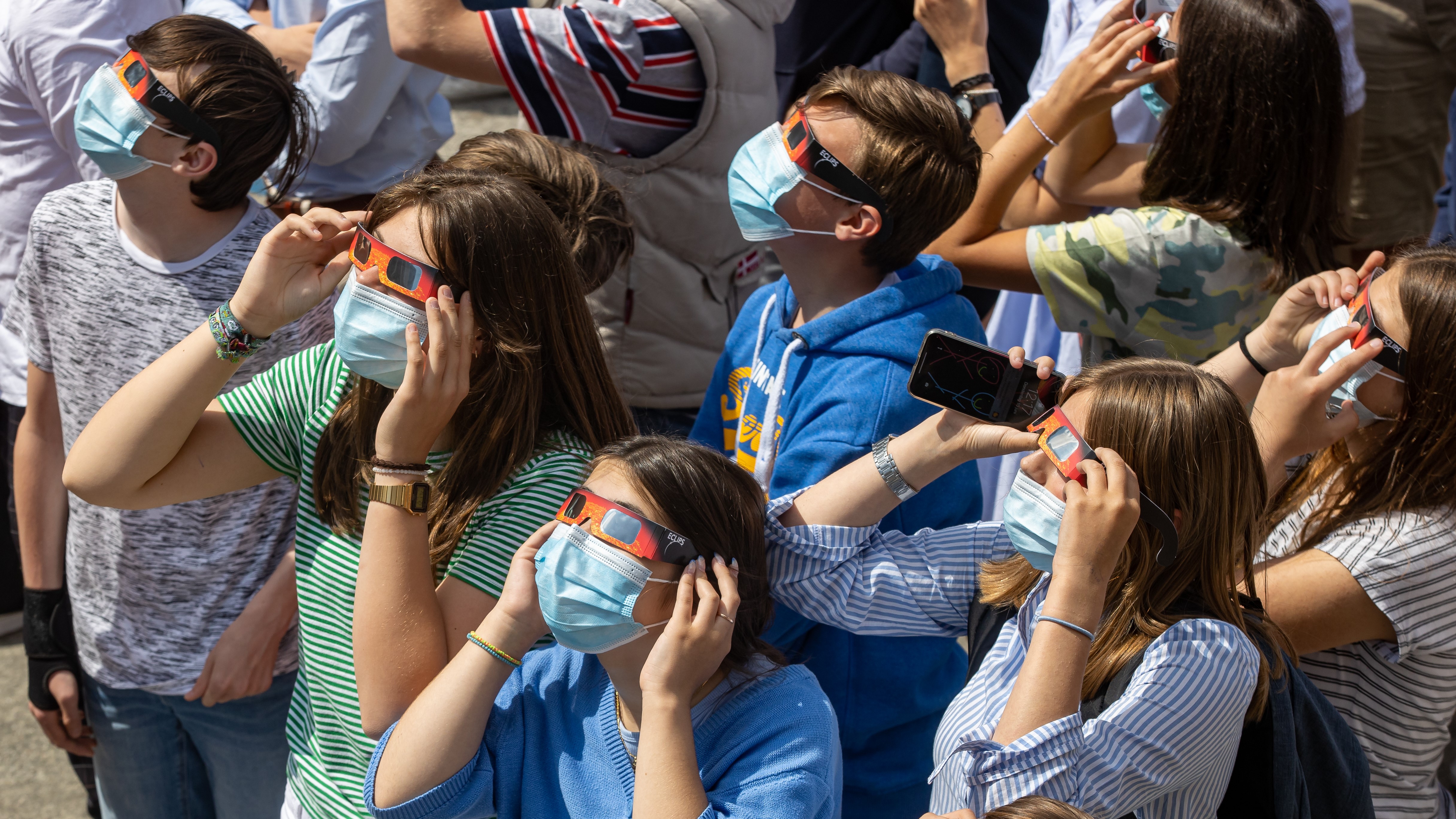
Students in Belgium use eclipse glasses to observe the partial solar eclipse on June 10, 2021, as photographed by Kurt Desplenter.
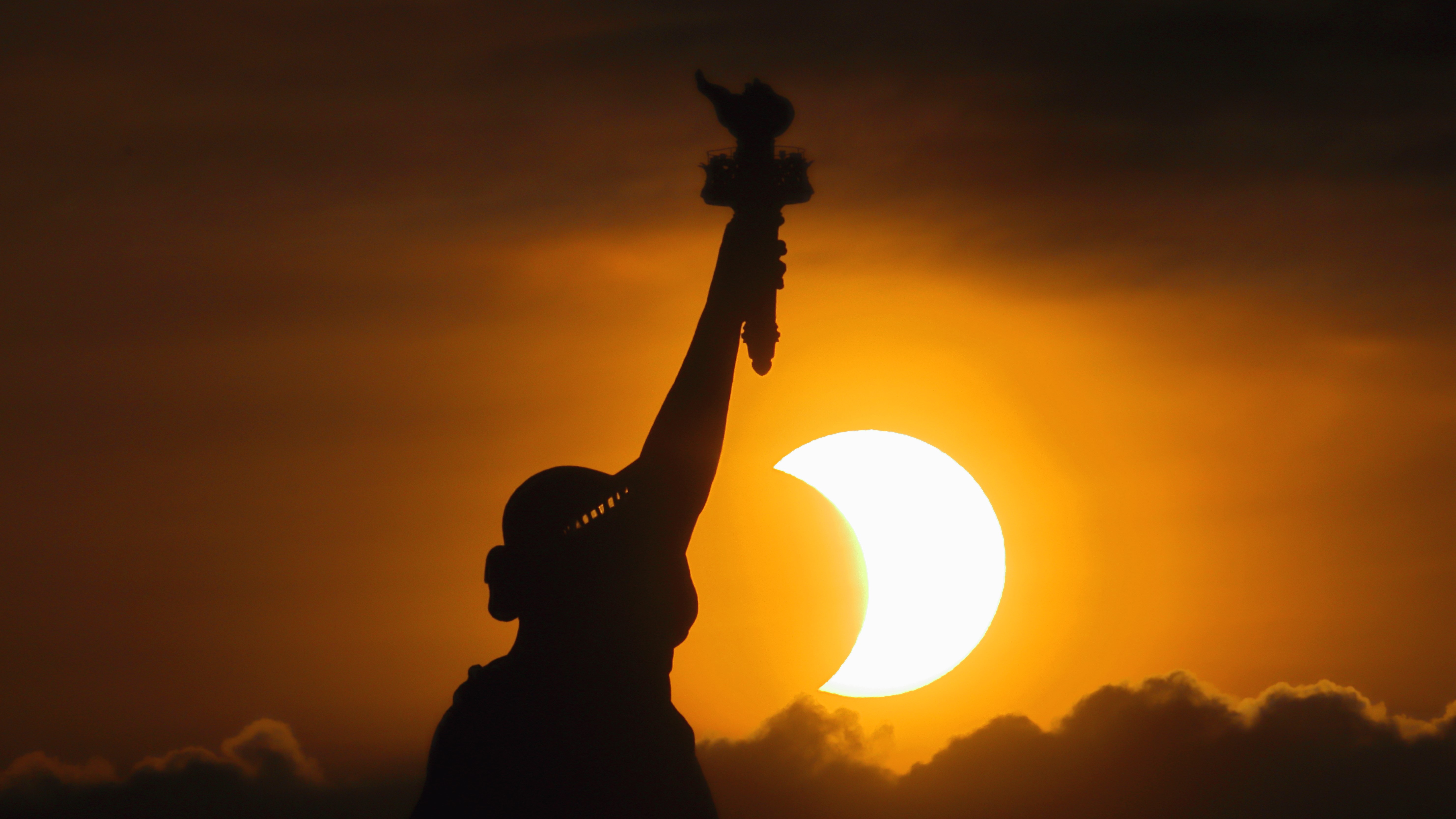
The Statue of Liberty and the partial solar eclipse of June 10, 2021, as photographed by Gary Hershorn.

The eclipsed sun shimmers off Fathom Five National Marine Park in Ontario on June 10, 2021, as photographed by Geoff Robins.
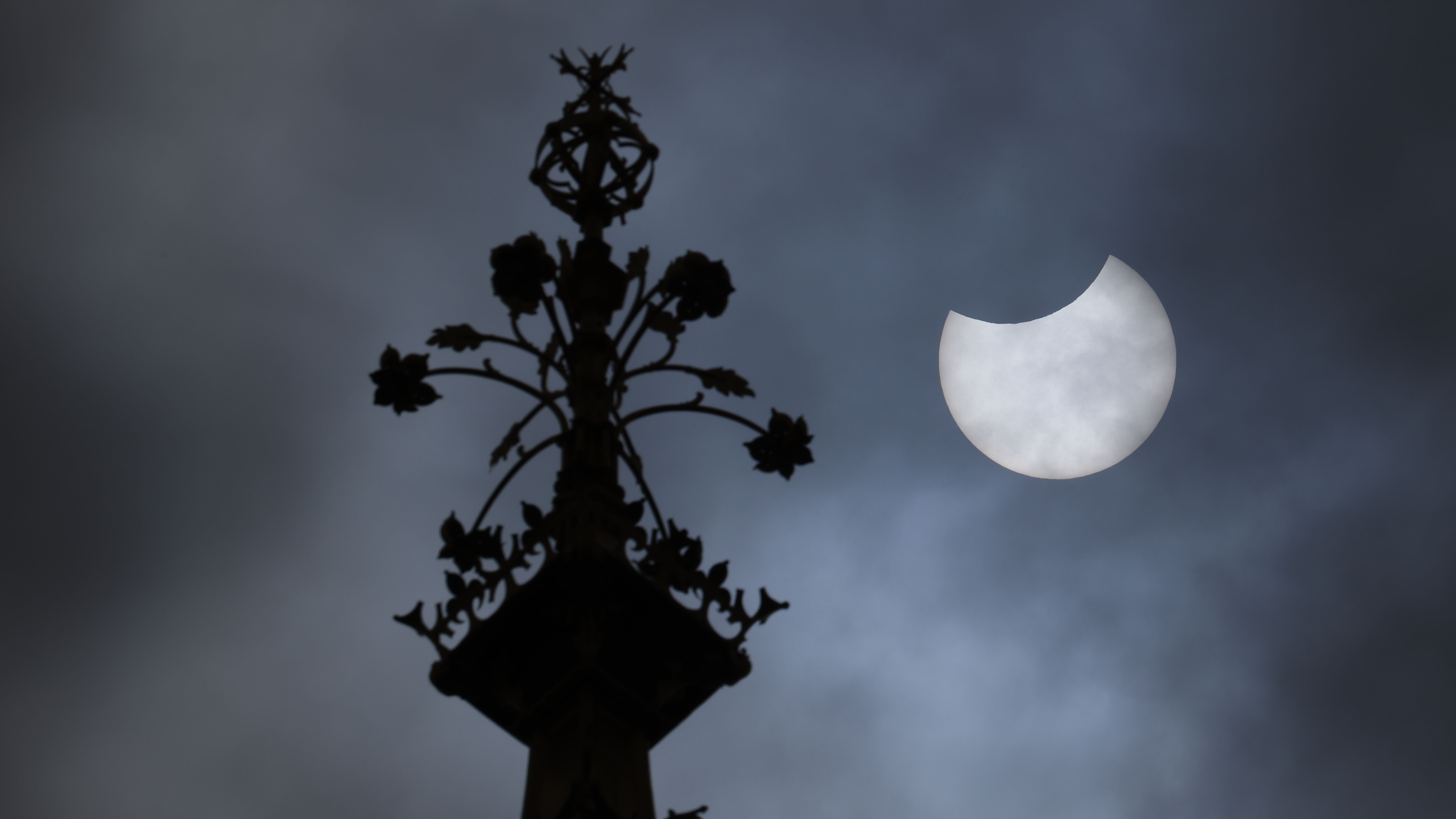
The eclipsed sun seen next to London's Big Ben on June 10, 2021, as photographed by Dan Kitwood.

Photographers line up in Jersey City to capture the sunrise eclipse over Manhattan's iconic skyline on June 10, 2021, as seen by Tayfun Coskun.
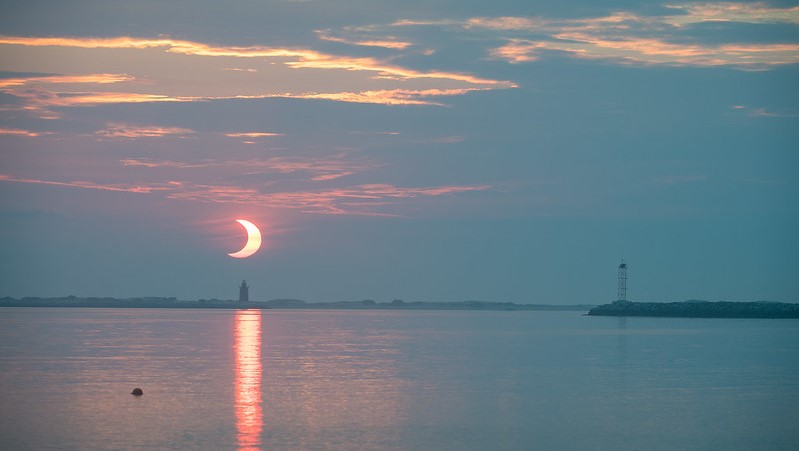
Meanwhile, in Delaware, another NASA photographer watched the June 10 solar eclipse as it rose over Lewes Beach.
Photographer Aubrey Gemignani captured this view of the Delaware Breakwater Lighthouse as the eclipse rose over it.

The partial solar eclipse of June 10 rises on the horizon just to the left of the U.S. Capitol building in this second view from NASA photographer Bill Ingalls.
Ingalls captured his images from Arlington, Virginia.

A skywatcher in London uses a sextant to observe the partial solar eclipse on June 10, 2021.
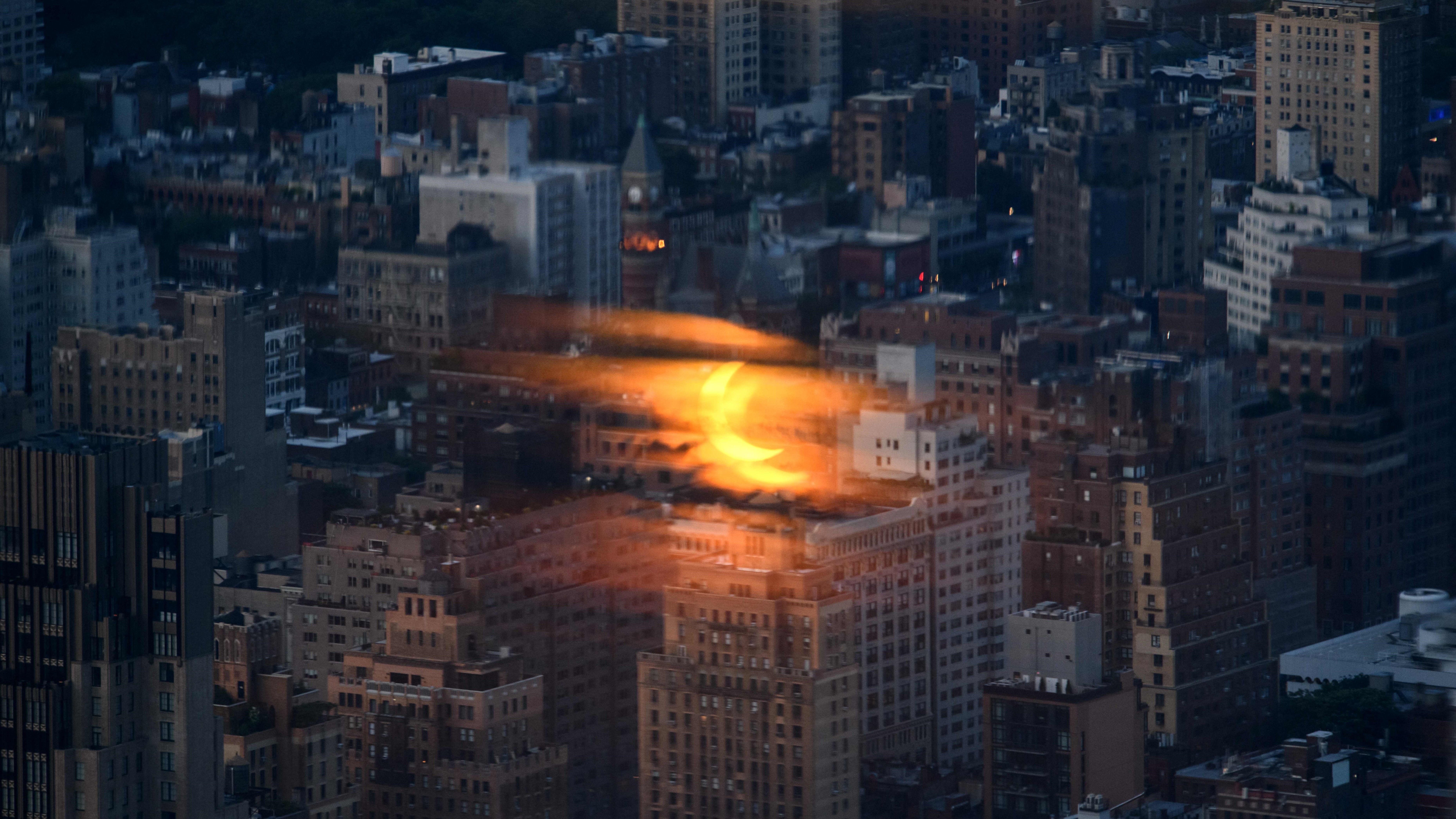
The partial solar eclipse of June 10, 2021, seen reflected in glass from a Manhattan skyscraper by Ed Jones.
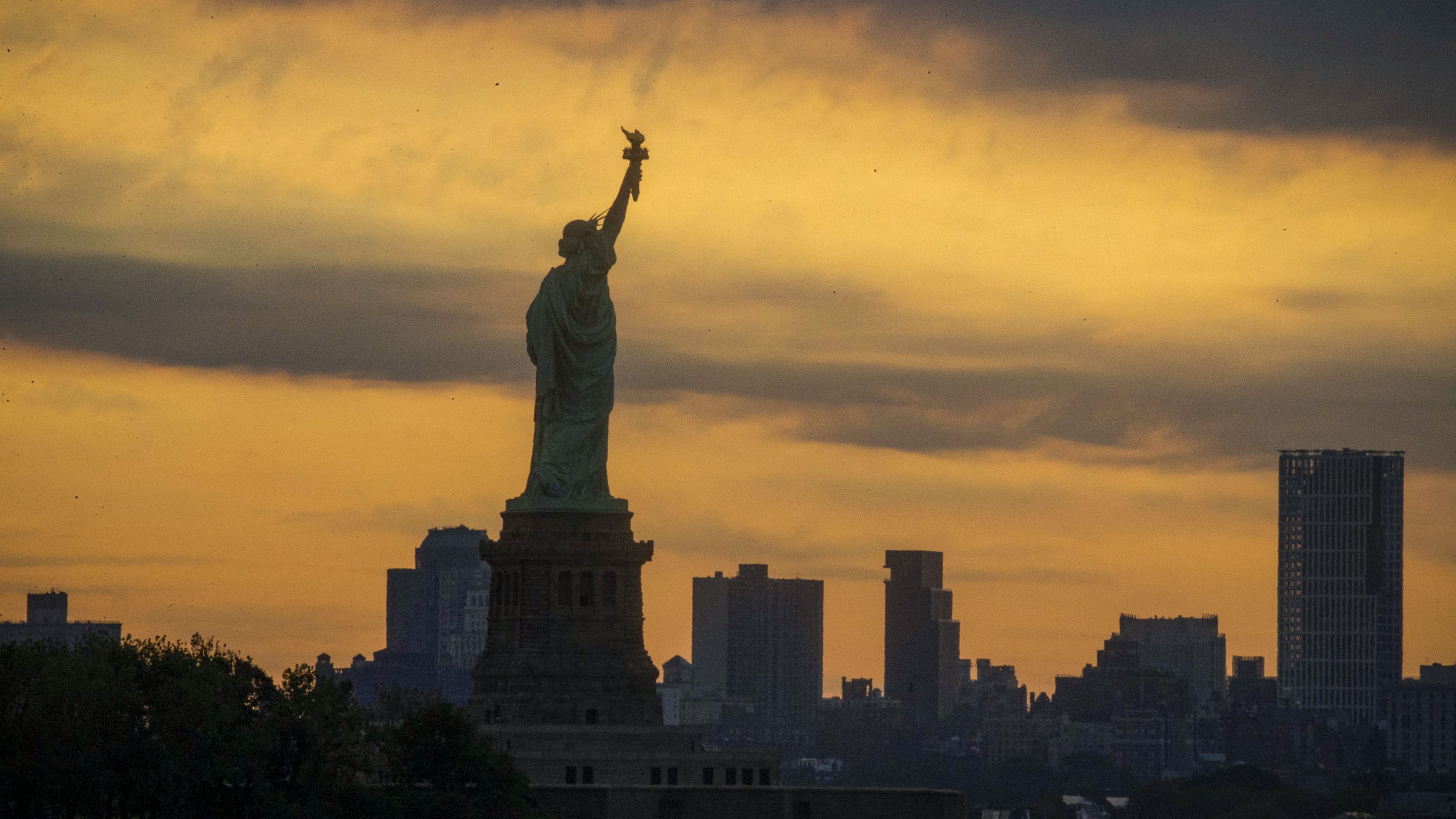
The Statue of Liberty seen against the eerie sky of the June 10, 2021, solar eclipse, as photographed by Kena Betancur.
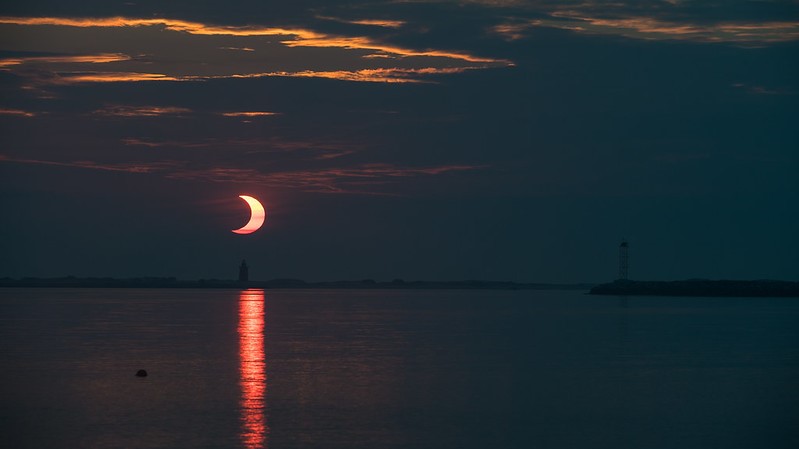
This second view of the June 10 solar eclipse shows a clear view of the crescent sun over Delaware Breakwater Lighthouse as seen by NASA photographer Aubrey Gemignani from Lewes Beach in Delaware at sunrise.
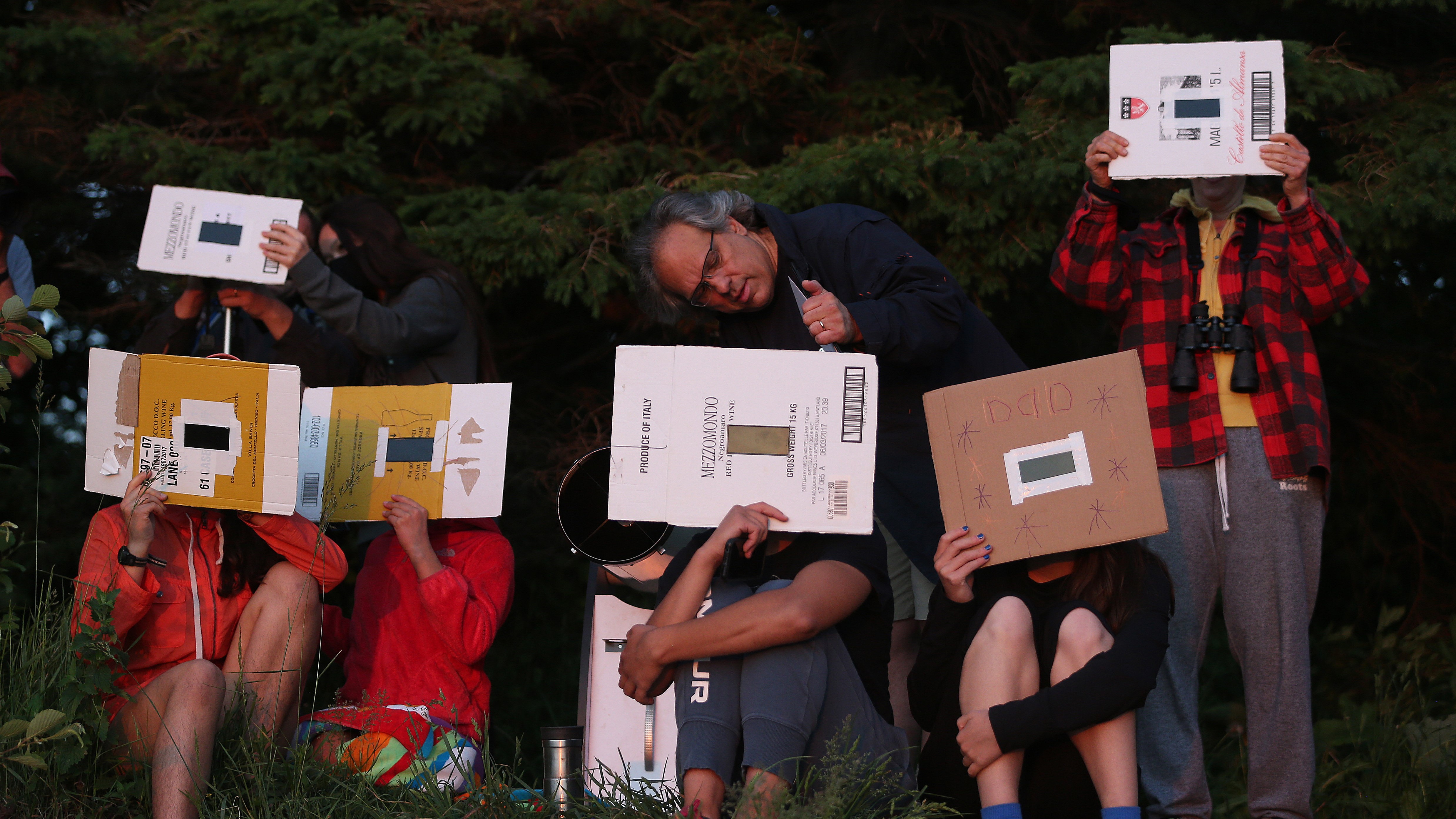
Skywatchers in Toronto use homemade eclipse viewers to watch the solar eclipse on June 10, 2021.
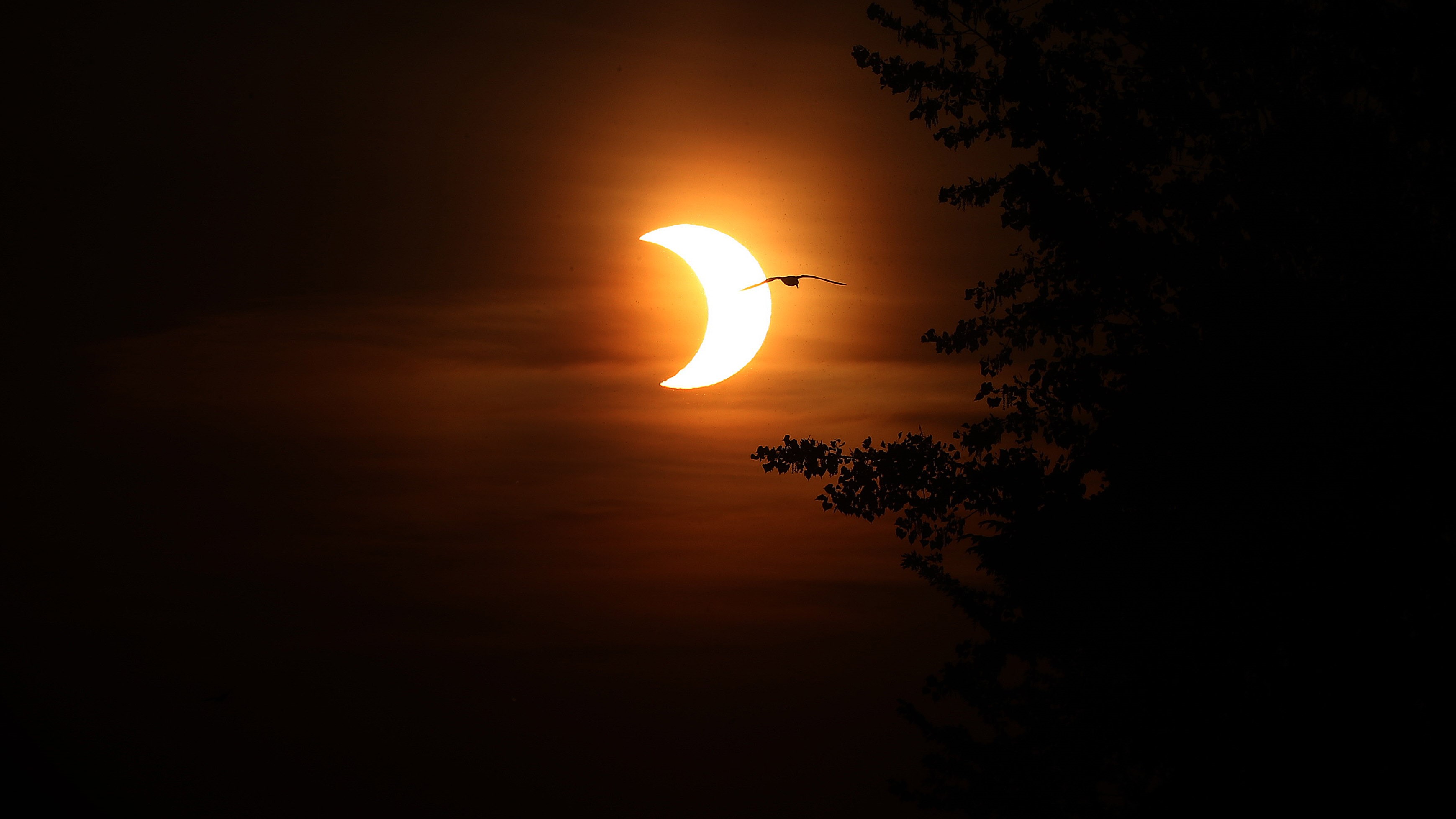
The eclipsed sun rising over Toronto on June 10, 2021, as seen by Steve Russell.
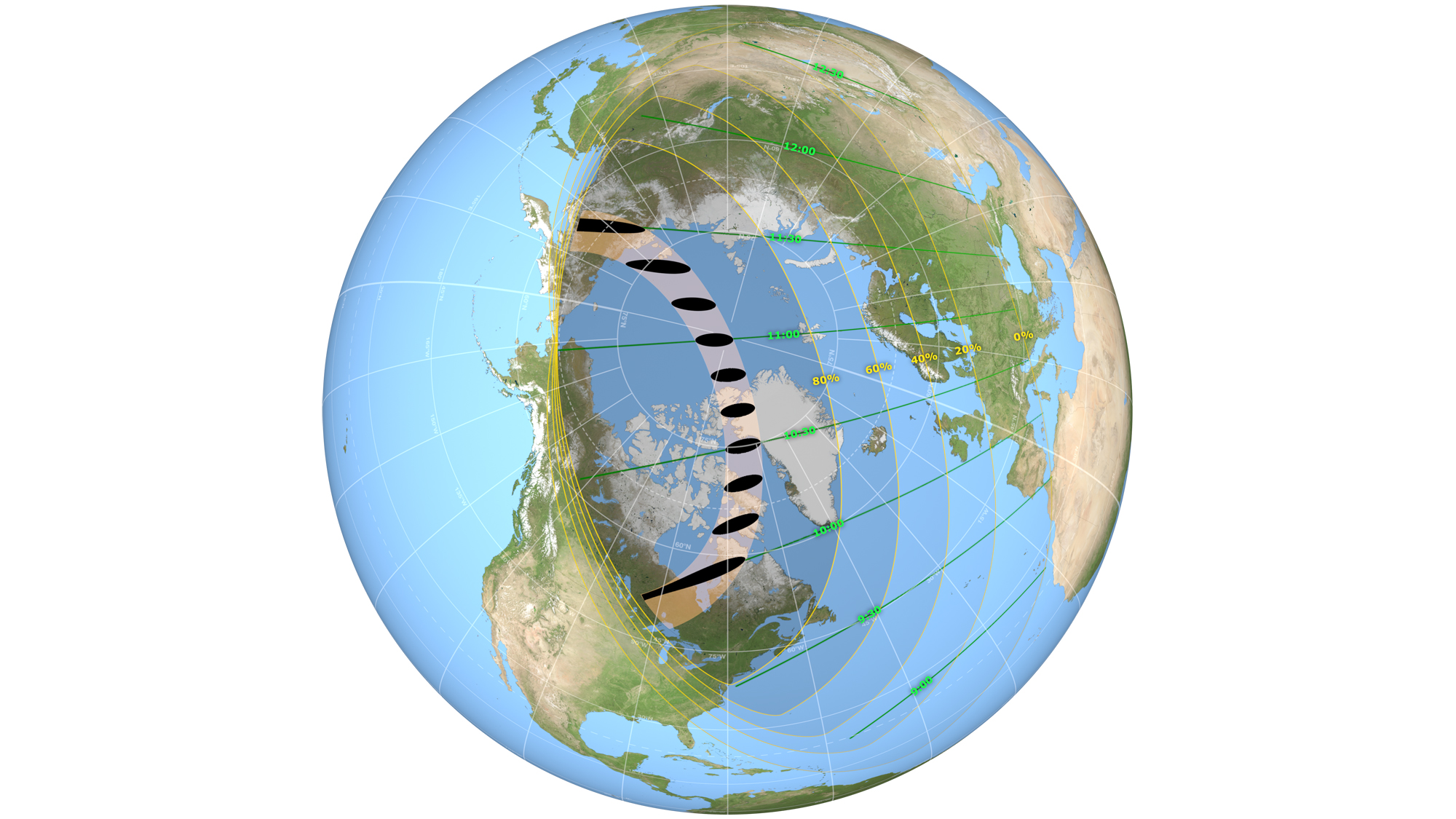
This map of the eclipse path shows where the June 10, 2021, annular and partial solar eclipse will occur. Skywatchers in much of central and eastern North America, as well as parts of Europe and Africa, saw a partial solar eclipse, but the "ring of fire" effect was limited to a narrow and scarcely-populated slice of land in central and eastern Canada.

A composite of images of an annular solar eclipse shows several stages, left to right, as the moon passes in front of the sun. The solar eclipse on June 10 began at 4:12 a.m. EDT (0812 GMT), when the moon first appeared to make contact with the sun from Earth's perspective. A "ring of fire" became visible along the path of annularity at 5:49 a.m. EDT (0949 GMT), with the moment of maximum eclipse occurring at 6:41 a.m. EDT (1041 GMT).
Related: The 'ring of fire' solar eclipse of 2021: What time does it begin?
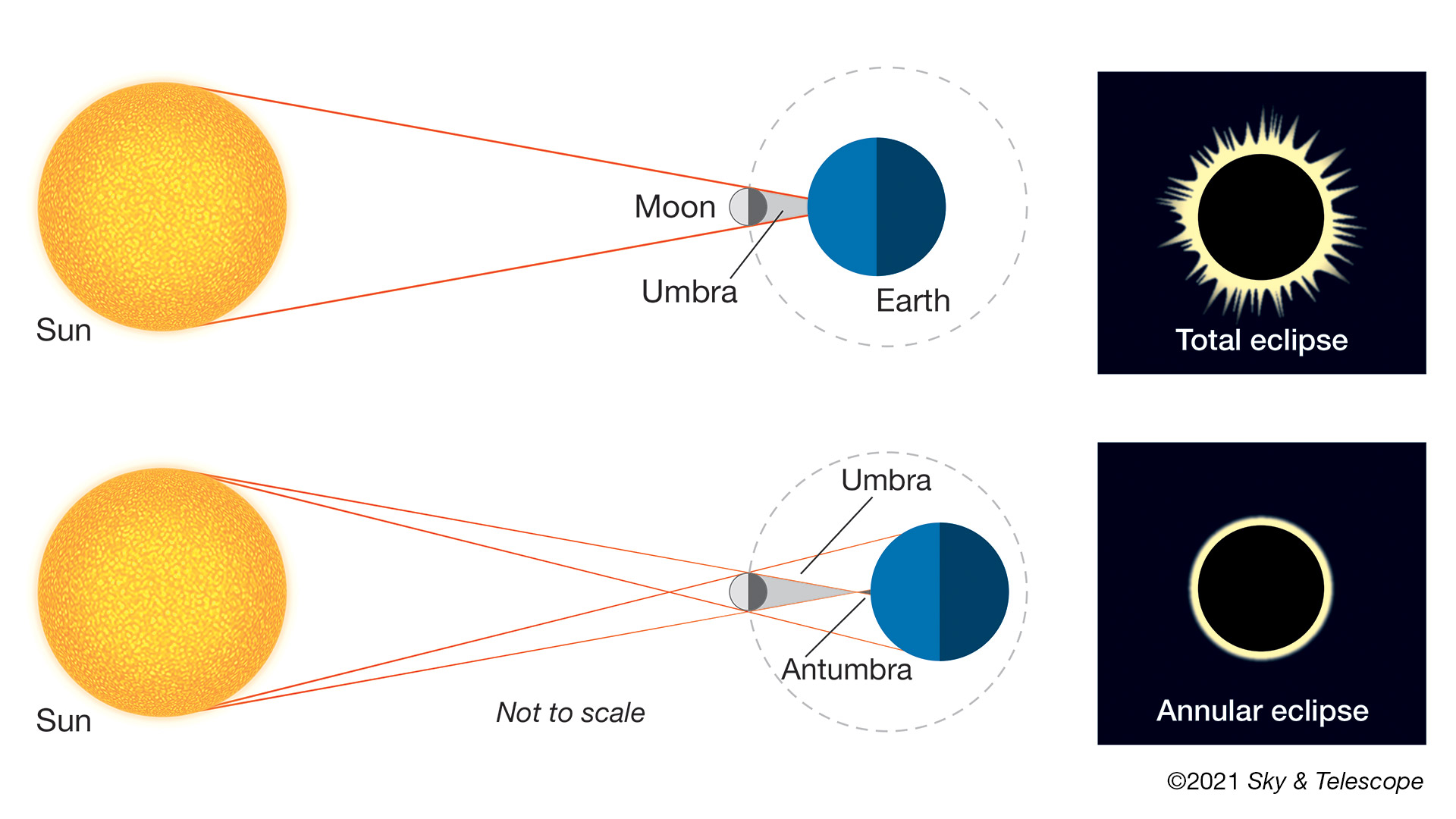
Annular eclipses are similar to total solar eclipses, but the key difference is that the moon will not completely cover the sun. When the moon is farther from Earth, it appears smaller in the sky than it does when it is closer to Earth. Because some of the sun's disk glows around the moon's edge, annular eclipses should never be observed without proper eye protection.
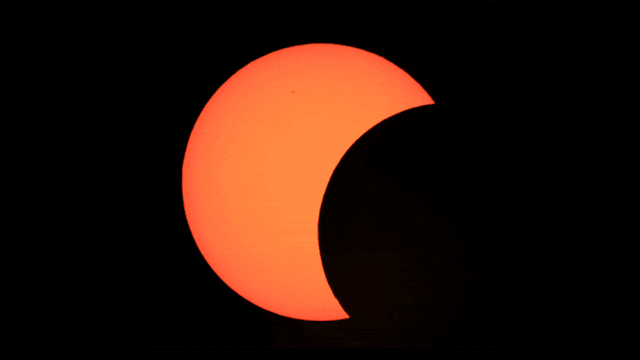
A visualization of an annular solar eclipse.
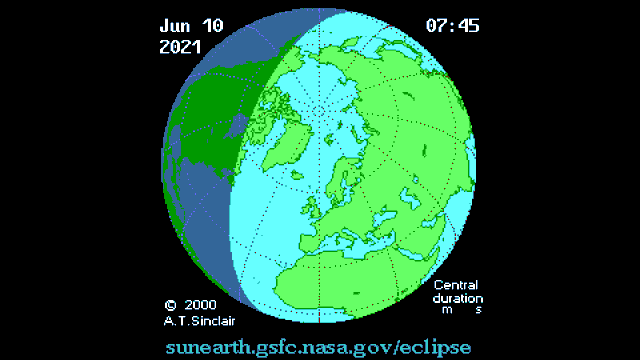
A NASA animation of the annular solar eclipse's predicted path on June 10, 2021.
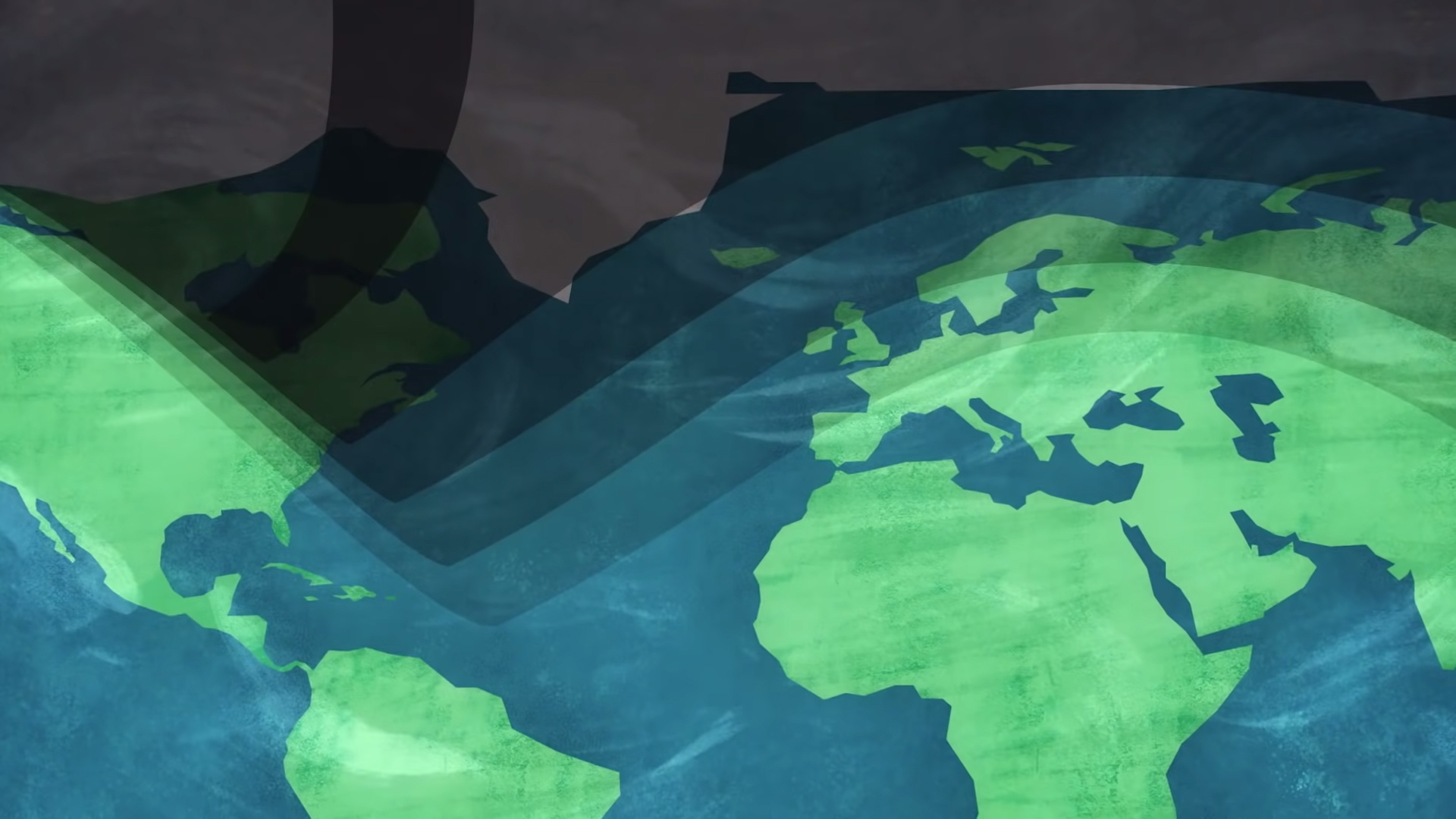
The partial solar eclipse is visible primarily in the Northeast U.S. and Canada, plus Northwest Europe. A small strip across Eastern Canada will experience it as an annular eclipse.
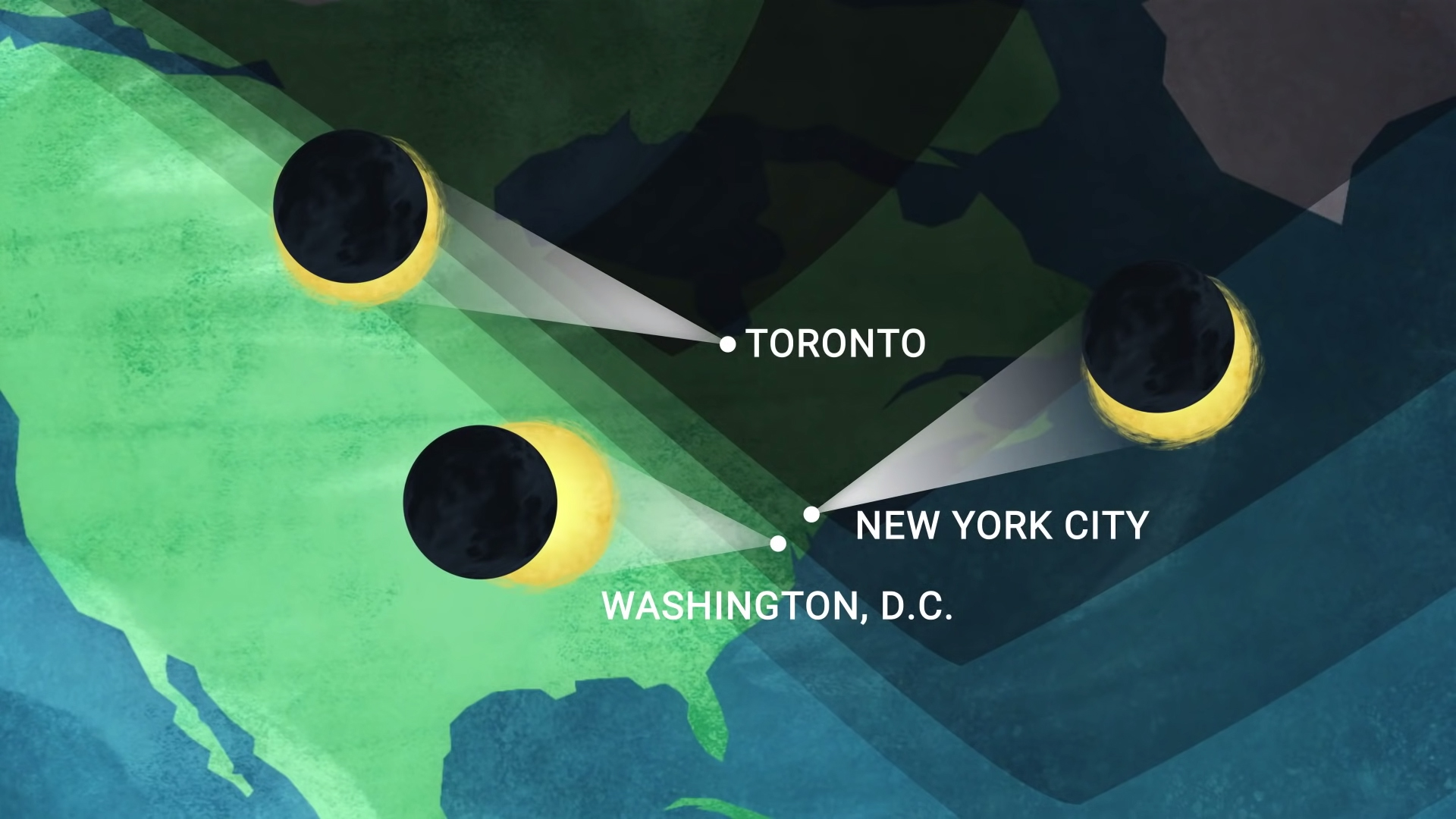
This map shows how the partial solar eclipse of June 10, 2021 will appear from cities in North America, where the eclipse will happen at sunrise.
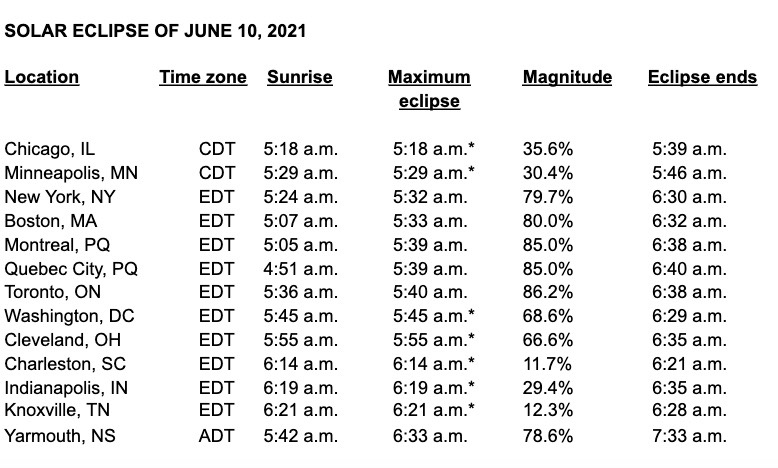
Table showing timing of the June 10, 2021 solar eclipse from various locations.
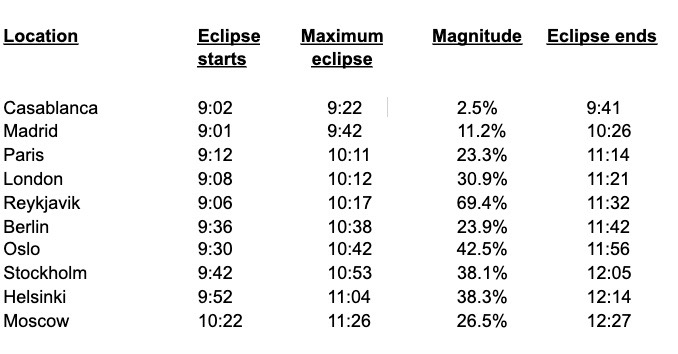
Table showing timing of the June 10, 2021 solar eclipse from various locations in Europe and Africa.
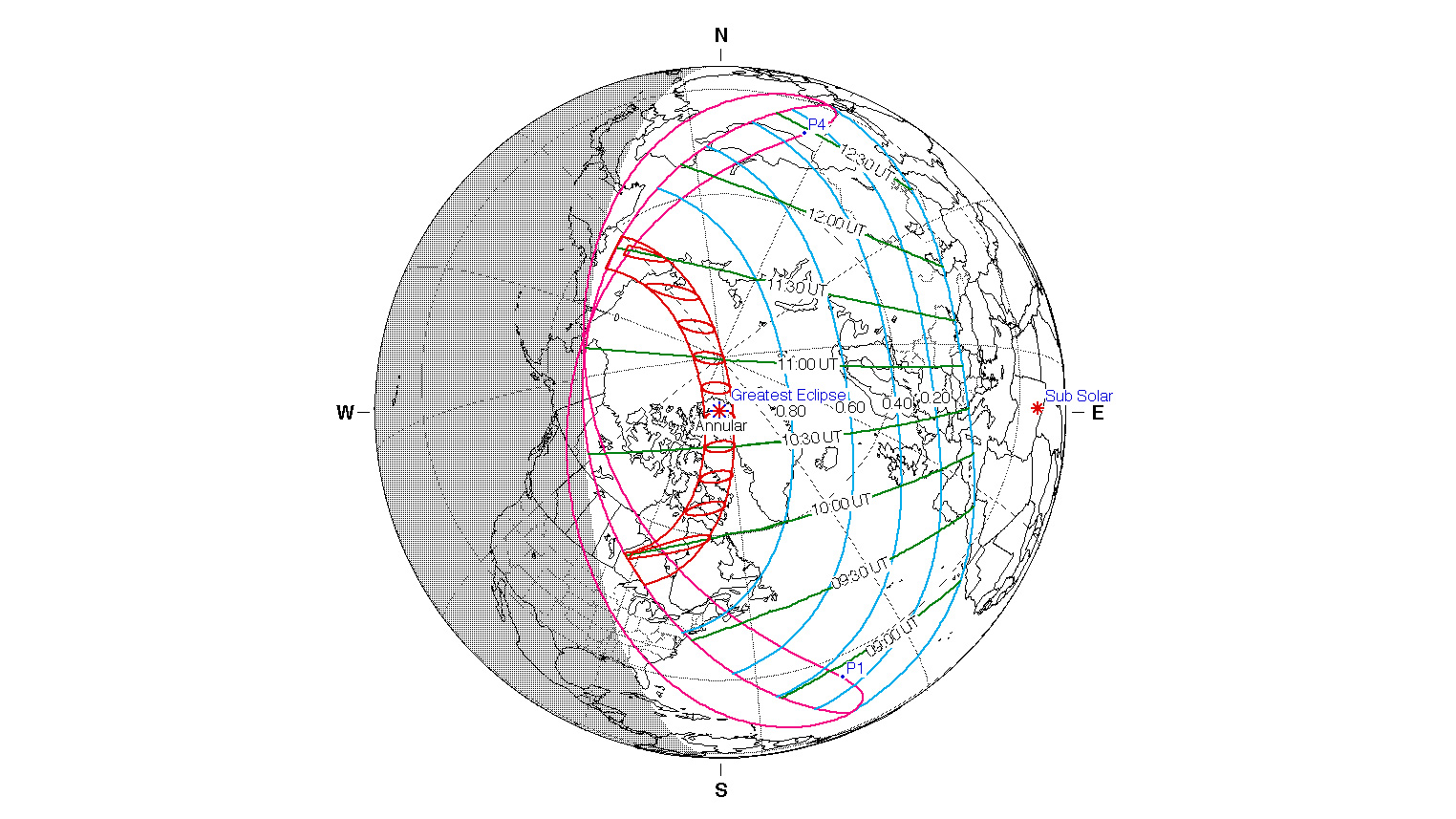
A NASA map of the path of the June 10, 2021 annular solar eclipse shows the journey it will take across Earth's northernmost regions.
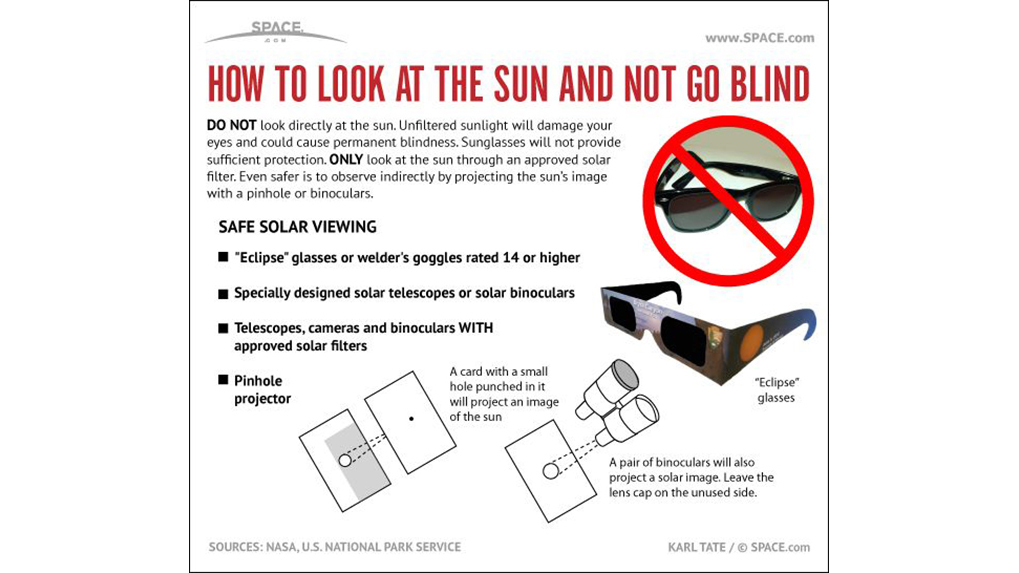
You should never look directly at the sun, but there are ways to safely observe an eclipse.
Related: How to make a solar eclipse viewer: Step-by-step photo guide
See also: Is it safe to reuse your solar eclipse glasses?
Follow us on Twitter @Spacedotcom and on Facebook.
Get the Space.com Newsletter
Breaking space news, the latest updates on rocket launches, skywatching events and more!
Join our Space Forums to keep talking space on the latest missions, night sky and more! And if you have a news tip, correction or comment, let us know at: community@space.com.

Hanneke Weitering is a multimedia journalist in the Pacific Northwest reporting on the future of aviation at FutureFlight.aero and Aviation International News and was previously the Editor for Spaceflight and Astronomy news here at Space.com. As an editor with over 10 years of experience in science journalism she has previously written for Scholastic Classroom Magazines, MedPage Today and The Joint Institute for Computational Sciences at Oak Ridge National Laboratory. After studying physics at the University of Tennessee in her hometown of Knoxville, she earned her graduate degree in Science, Health and Environmental Reporting (SHERP) from New York University. Hanneke joined the Space.com team in 2016 as a staff writer and producer, covering topics including spaceflight and astronomy. She currently lives in Seattle, home of the Space Needle, with her cat and two snakes. In her spare time, Hanneke enjoys exploring the Rocky Mountains, basking in nature and looking for dark skies to gaze at the cosmos.









